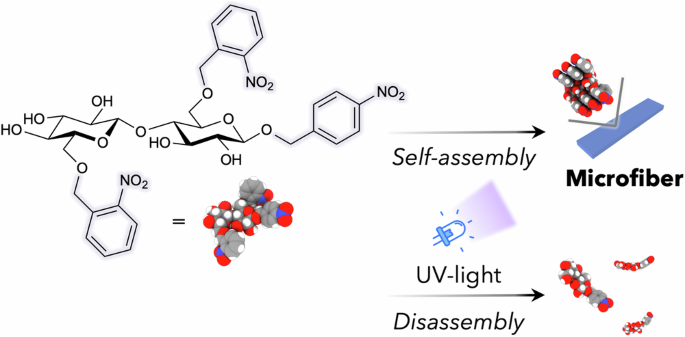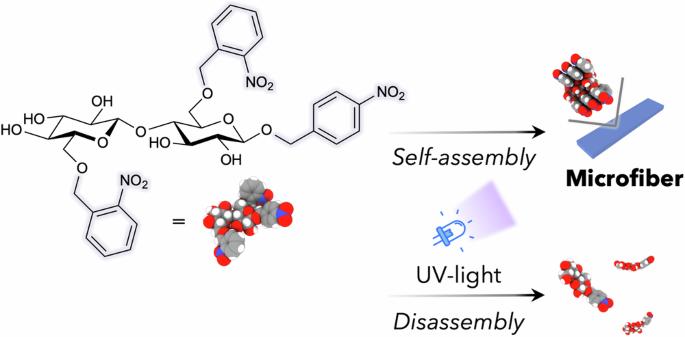Photodegradable glyco-microfibers fabricated by the self-assembly of cellobiose derivatives bearing nitrobenzyl groups
IF 7.5
Q1 MATERIALS SCIENCE, MULTIDISCIPLINARY
引用次数: 0
Abstract
Stimuli-responsive materials constructed via the self-assembly of small biomolecules are attracting increasing attention because of their biocompatibility, sustainability, and variety of (bio)applications. Nevertheless, the research on oligosaccharide-based molecular designs for such stimuli-responsive materials (or stimuli-responsive glyco-materials) is limited, partly due to the intrinsic structural diversity of oligosaccharides and the difficulty associated with their selective chemical syntheses. Herein, we report the construction of photodegradable glyco-microfibers by the self-assembly of cellobiose derivatives bearing nitrobenzyl groups. The atomic-scale, self-assembled architecture of the photodegradable glyco-microfibers is unveiled and compared with those of pristine cellobiose and cellulose polymorphs in previous reports. Stimuli-responsive oligosaccharide-based molecular designs are limited due to their intrinsic structural diversity and difficulties in selective synthesis. Here, photodegradable glyco-microfibers are synthesized by the selfassembly of cellobiose derivatives bearing nitrobenzyl groups.


通过带有硝基苄基的纤维素衍生物的自组装制造光降解糖化微纤维
通过小生物分子自组装构建的刺激响应材料因其生物相容性、可持续性和多种(生物)应用而日益受到关注。然而,基于寡糖分子设计的刺激响应材料(或刺激响应糖类材料)的研究还很有限,部分原因是寡糖固有的结构多样性以及选择性化学合成的难度。在此,我们报告了通过含硝基苄基的纤维生物糖衍生物的自组装构建光降解糖化微纤维的情况。我们揭示了光降解糖元微纤维的原子尺度自组装结构,并将其与之前报道中的原始纤维素和纤维素多晶体的结构进行了比较。
本文章由计算机程序翻译,如有差异,请以英文原文为准。
求助全文
约1分钟内获得全文
求助全文
来源期刊

Communications Materials
MATERIALS SCIENCE, MULTIDISCIPLINARY-
CiteScore
12.10
自引率
1.30%
发文量
85
审稿时长
17 weeks
期刊介绍:
Communications Materials, a selective open access journal within Nature Portfolio, is dedicated to publishing top-tier research, reviews, and commentary across all facets of materials science. The journal showcases significant advancements in specialized research areas, encompassing both fundamental and applied studies. Serving as an open access option for materials sciences, Communications Materials applies less stringent criteria for impact and significance compared to Nature-branded journals, including Nature Communications.
 求助内容:
求助内容: 应助结果提醒方式:
应助结果提醒方式:


